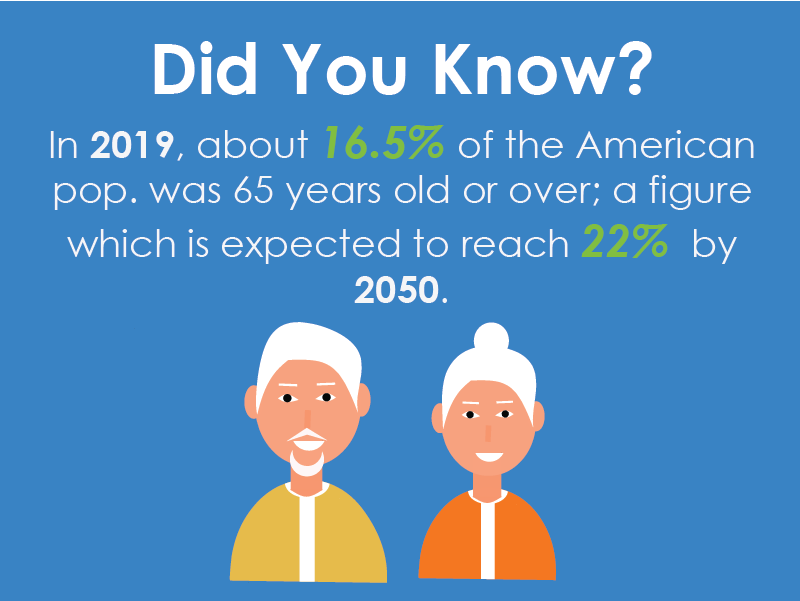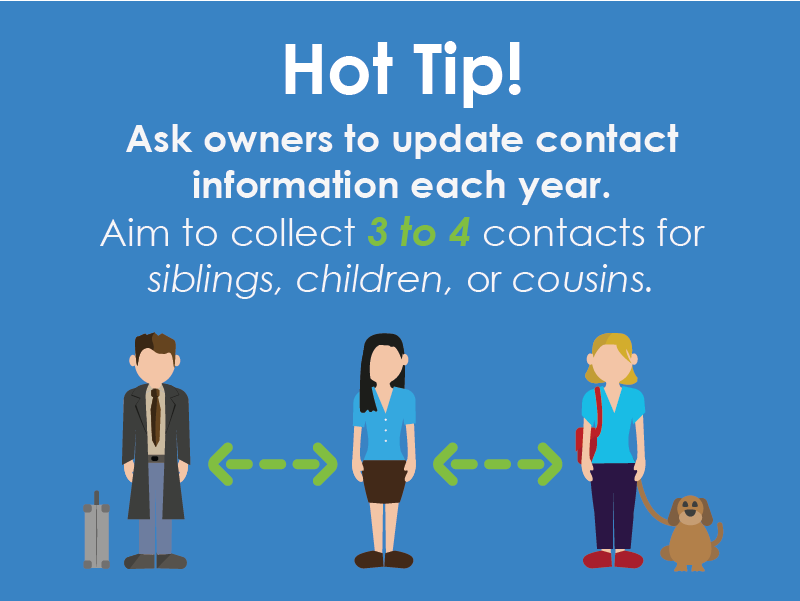Most of us imagine retirement as a peaceful, care-free time. But it’s not always possible to “age with grace.” When we enter the later stages of our lives, it can become more challenging to care for ourselves. Mobility may become more problematic, or we may have a harder time remembering things. However, HOAs can make it easier for older homeowners to maintain their independence and continue to be active and engaged members of their community.
HOAs may be seeing an increase in owners who are older than 65. This trend reflects a bigger demographic pattern in America. In 2019, about 16.5% of the American population was over the age of 64, a figure which is expected to reach 22% by 2050. This is a big jump from 1950, when only 8% of the population was older than 64.

Change is constant; HOAs must change too
It is the people that make an HOA truly unique. Associations will see that the demographics of the community change over time, especially if owners don’t move out of the development very often. As such, the board and property manager must be conscious of the community’s evolving concerns and needs, and make changes as necessary. That doesn’t mean an HOA that is not a 55+ community can ignore the needs of younger owners; changes to governing documents, improvements and initiatives must serve the best interests of young and old homeowners.
Tips to help keep an aging HOA community happy and safe
These suggestions are great starting points if you are looking for guidance about how to support aging homeowners in your community.
1. Collect and update family contact information
It’s always a good idea to have an up-to-date emergency contact list for your community (after all, no one plans an emergency). But it’s even more important to have this information if you have a lot of community members who are having trouble keeping up with house maintenance or experiencing health issues. Without this information, the association may be lost about who to contact to assist the individual, leaving the board or property manager with the responsibility to try and figure out what to do next.
Boards are advised to start collecting this information as soon as possible if they don’t already have a list. Ideally, this information will be collected from new owners before or during the time they move in.
When it comes to aging owners, ask for 3 to 4 family contacts, including siblings, children, or cousins. Ask owners to update their emergency contact information each year.

This way, even if one person on the contact list is unable to help, chances are good that someone will be ready to assist. Make sure to request phone numbers as well as email addresses.
2. Keep up with current legislation
You don’t need us to tell you how important it is to stay on top of state legislation. This is one crucial way to shield the HOA from legal liability. Communities with older homeowners will want to pay special attention to state and local laws concerning disabilities and accessibility. Depending on the laws, the HOA may be required to install ramps or other items to help with accessibility.
For example, there was a situation where an older woman who lived on the top floor of a three-story condo building with no elevator was having real problems going up and down the steps. Carrying groceries and other everyday items was becoming increasingly difficult, and the HOA had to figure out if there was an obligation to A) install the elevator and B) pay for it.
The decisions made about this sort of issue must be based on the state laws, the HOA’s governing documents, and whether this addition will benefit more than one person. In this case, if the HOA doesn’t add the elevator, the woman may hurt herself on the stairs, and all residents may have to cover costs associated with the accident. Alternatively, having an elevator may reduce the risk of injury and boost the property’s fair market value.
HOAs may also need to revise their budget to accommodate expenses like this.
3. Be vigilant about maintenance
The human body doesn’t function quite the same after 70 or 80 years of life. It can be harder to get around, and a poorly maintained neighbourhood may create additional barriers. The association should look out for uneven walkways, damaged ramps, malfunctioning doors, gates, or other areas that need repairs, and make those repairs as soon as possible. You can even ask owners to submit requests to management if they see something that needs to be fixed.
4. Ensure HOA rules and regulations are reasonable
HOAs have clear rules and regulations about garbage disposal, maintenance and landscaping, which requires owners to perform some manual labour on their own. But mowing the lawn or painting a door may be too difficult for some older residents. As such, it may be wise to consider amending policies or finding alternative solutions for these homeowners. For example, some HOAs have negotiated a contract price with a landscaping company that owners with mobility issues can opt in to for an additional fee.
Every few years, the board can evaluate HOA rules and determine which ones can be modified to improve the quality of life for owners, while still adhering to the standards the HOA has laid out. Being proactive about these sorts of issues will create a positive impact on property values within the community, and keep owners very happy, too.
5. Keep the lines of communication open
Last but certainly not least is maintaining good communication with your aging owners. This is the single best way for boards and property managers to identify the issues that affect owners most.
HOA management software can help facilitate communication between management and owners; messages can be sent from any device and received in minutes. Condo Control even allows messages to be sent via email, text and automated voice message. However, not all owners are comfortable with technology. As such, an integrated communication approach could be the best solution. The board can also make time at the end of member meetings to let owners voice their issues and/or concerns.
Conclusion
As 65+ age groups increase, HOAs will need to be mindful of new and evolving issues and requirements that may impact the development. Older homeowners often prefer to stay in their homes if they can, and being in a supportive neighbourhood will make it easier for them to carry out daily tasks and routines on their own.
Communities that cater to residents who are older than 54 are becoming increasingly popular across the country as they seek to make retirement living as comfortable as possible. HOAs that have an unexpectedly higher senior population may consider reaching out to the board of one of these associations, or even taking a tour to observe and learn about what is most important to this demographic of homeowners.


